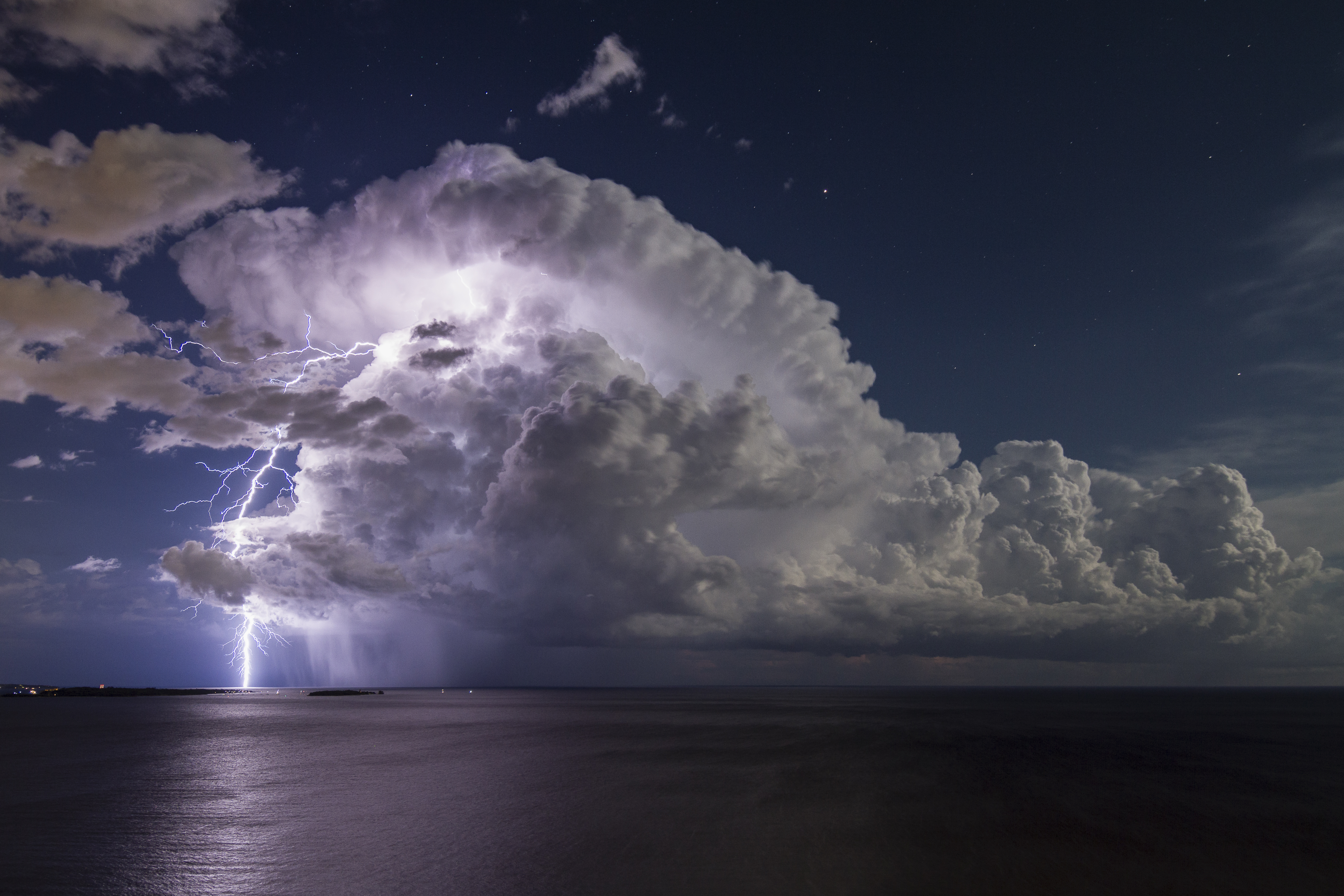Intense convection

Our group works on various forms of intense atmospheric convection ranging from isolated thunderstorms to organized mesoscale convective systems that span 100's of km. We particularly focus on tropical convection that leads to heavy rainfall events. Recently, we have started working on lightening in a collaborative project with Prof. S. Ravichandran.
Spatial extent of weather systems

Jupiter's trademark Great Red Spot -- a swirling storm feature larger than Earth -- has shrunken to its smallest size ever measured. Astronomers have followed this downsizing since the 1930s. However, this mystery has not been solved yet. Similarly we have a very few studies on the size of weather systems on the earth. Our group is looking at what controls the size of precipitation systems on the Earth and weather systems such as monsoon low-pressure systems.
Simulation of tropical convection
The peak of the 2008 hurricane season is simulated using GFDL’s High Resolution Atmosphere Model (HiRAM), at 12.5 km resolution. Please find more details at
here
State of the art global scale climate models have horizontal resolutions of the order of tens of kilometers. However, these resolutions are much lower
than the scales required to resolve tropical convection o(1 km). We use process-based diagnostics such as the precipitation scaling diagnostic developed by
O’Gorman and Schneider (2009)
, and Moist static energy variance based phase-plane dignostic (Maithel and Back, Thesis link
) to
investigate the simulations of tropical rainfall and convection.
Tropical-extratropical interactions

The extratropical influence on the break of the Indian summer monsoon has been reported at least since 1950's. However, the earlier theoretical work suggests that the Rossby wave propagation occurs mainly in westerly ducts where the upper-level mean zonal winds are westerly, but not in the easterly trade wind regions owing to the critical layer theory. As the monsoon flow has a strong easterly jet at upper levels, the pathways for tropical-extratropical interactions during Asian summer monsoon are not clear. Using a simple ray-tracing technique for two-dimensional flow, we show that it is possible for extratropical waves to intrude over the Indian latitudes at mid-levels (Figure 1) during the summer monsoon. This intrusion at mid-levels follows approximately a great circle route. However, the waves at the upper level do not intrude following this same route as the flow is different. The widely used existing tools based on potential vorticity or Rossby wave packets tracking have limitations in analyzing the extratropical influence during the summer monsoon as they mainly track features of the upper-level flow. We are testing the utility of the available tools for the monsoon flow, explore possible modifications required for tracking the mid- and low-level, and propose a new automated diagnostic tool.